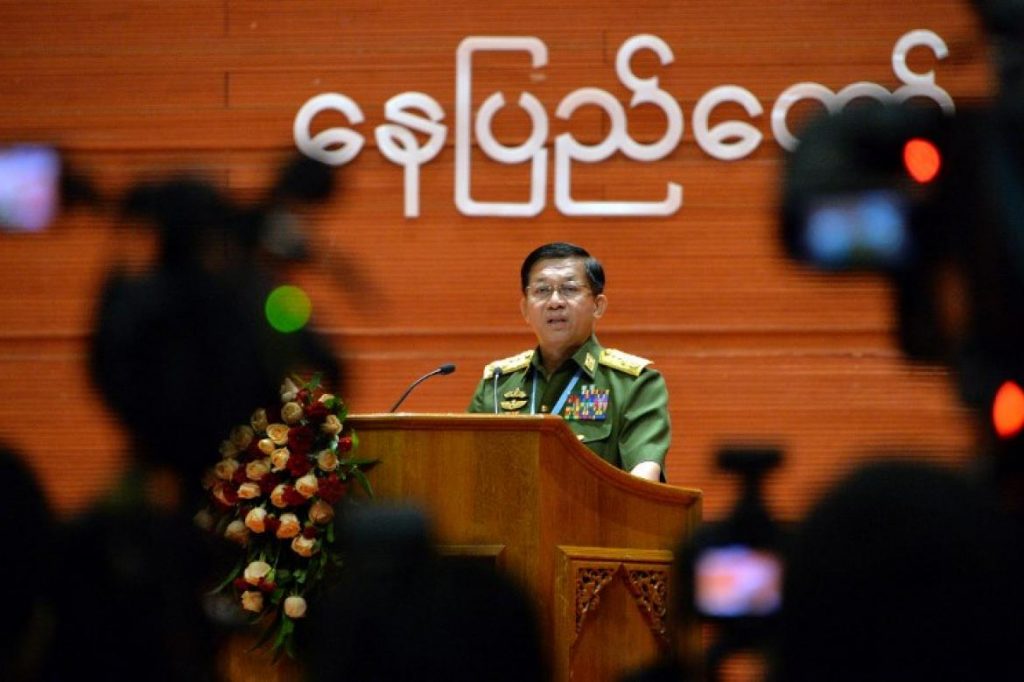The Tatmadaw’s unilateral ceasefire has opened a window of opportunity for progress in Myanmar’s troubled peace process that must be used wisely to cement a permanent truce.
By AUNG NAING OO | FRONTIER
Unprecedented – that was the word that came to mind when the Tatmadaw announced its unilateral ceasefire on December 21. It was unprecedented in a sense that it covers all key areas of armed conflict except Rakhine State. It means there is now a ceasefire – unilateral or otherwise – in most of the parts of the country where there has been fighting, if areas that already fall under the Nationwide Ceasefire Agreement are included.
It was also unprecedented because only once in Myanmar’s recent conflict history has such an initiative been taken. Early in the peace process, on January 18, 2013, the military unilaterally announced a temporary cessation of hostilities in and around Lejayang in Kachin State. Unlike the latest ceasefire, it was confined to a small geographical location and had no specific timeframe.
At that time, only a few bilateral ceasefires agreements had been signed, notably with the Karen National Union and the Restoration Council of Shan State.
The December 21 ceasefire announcement thus took everyone by surprise, but was widely welcomed in Myanmar and further afield.
Support more independent journalism like this. Sign up to be a Frontier member.
The truce is for four months and will expire on April 30. It has come at a crucial time when the government is trying to persuade the Kachin Independence Organization, Ta’ang National Liberation Army, Myanmar National Democratic Alliance Army and Arakan Army to sign the NCA. It was announced at a time when the formal peace process has appeared to stall following the decision by the KNU and RCSS to suspend participation in November.
Demonstrating flexibility, the Tatmadaw’s intention in calling the ceasefire is aimed at allowing time for the government to negotiate with the groups that have spurned the NCA. It is also aimed at helping to resolve differences with NCA signatories, such as the KNU and RCSS. The Tatmadaw has even formed a team of high-ranking army officers who are deeply involved in the peace process to provide assistance when necessary.
Generally, unilateral ceasefires are to demonstrate goodwill and create conditions for negotiating a permanent truce or peace agreement as well as for humanitarian interventions. They are difficult to maintain and often collapse because the declaration of a unilateral truce is no guarantee that fighting will not occur.
As such, unilateral ceasefires announced out of goodwill or for strategic reasons can have an adverse effect. No reminder is needed that Myanmar is in a delicate situation when it is facing scrutiny over clashes with NCA signatories and groups that have signed bilateral ceasefires.
It is hoped that the four groups – KIO, TNLA, MNDAA and AA – will respond positively and avoid clashes with the Tatmadaw. Ideally, the KNU and RCSS will also resume participation in the formal peace process.
However, it needs to be recognised that in Myanmar’s deep-rooted history of armed conflict, four months is a short period of time. If the ceasefire period is not used effectively and strategically, it will fail to achieve concrete results. The worst-case scenario would be for Myanmar to find itself back at square one when the truce ends.
There is much at stake. Beyond welcoming this gesture, there needs to be comprehensive plans for negotiations, especially with non-signatories of the NCA. The plans will have to come from the government; based on the pattern of negotiations since the formal peace process began about seven years ago, it is unlikely that NCA non-signatories will initiate any moves.
The Tatmadaw’s unilateral truce is one of the best New Year gifts that Myanmar has received in decades. It is certainly a gift to civilians in conflict areas. For them and for Myanmar, it must be used wisely to make the unilateral ceasefire a permanent truce.
Meanwhile, all sides should avoid blame and practise tolerance because the probability of a resumption of fighting is high. Efforts for negotiations must be tripled and all available resources must be used.
There is no illusion that ceasefire talks with groups yet to sign the NCA will be easy. But even if no agreement is reached with them by the end of April, firm steps must be taken to pave the way to a ceasefire and their eventual participation in the political negotiations being held as part of the peace process.
Windows of opportunity are rare in a peace process. Sometimes, they last a very short time before slamming shut. For this reason, the opportunity presented by the Tatmadaw’s unilateral ceasefire must be seized without fail.
Aung Naing Oo is a former director of the Myanmar Peace Center and author of Pathway to Peace: An Insider’s Account of the Myanmar Peace Process. He now serves as executive director of the Technical Secretariat Centre of the Union-level Joint Ceasefire Monitoring Committee. The views expressed are his own and do not reflect the official position of the Technical Secretariat Centre.



